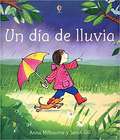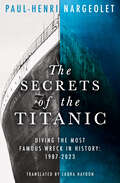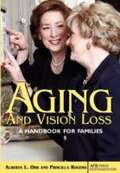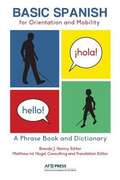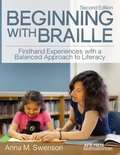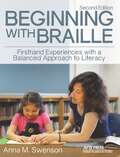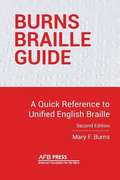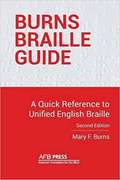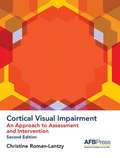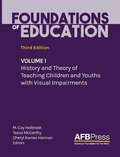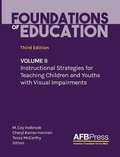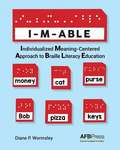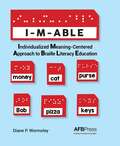- Table View
- List View
Content Strategy for Mobile
by Karen McgraneThis book discusses how to manage, publish and maintain your content across all emerging mobiles; by creating a holistic content strategy that can be used on a variety of devices.
CSS3 for Web Designers, 2nd Edition
by Dan CederholmFrom advanced selectors to generated content to web fonts, and from gradients, shadows, and rounded corners to elegant animations, CSS3 holds a universe of creative possibilities. No one can better guide you through these galaxies than Dan Cederholm. In this second edition, he tackles new properties and techniques, including micro layouts. Learn what works, how it works, and how to adapt for browsers where it doesn’t. What’s new in the second edition? Many of the CSS3 properties Dan discussed in 2010 now have wider browser support, which means you can feel even more confident putting them to use. In this updated edition, Dan has carefully refreshed code samples, removed old hacks that are no longer necessary, and written a whole new chapter on micro layouts. There’s no better time to dive in to—or polish up—your CSS3 skills.
Design Is a Job
by Mike MonteiroCo-founder of Mule Design and raconteur Mike Monteiro wants to help you do your job better. From contracts to selling design, from working with clients to working with each other, you'll learn why navigating the business of design is just as important as the craft of it. Cultivated from his own experience, Mike packs this brief book with knowledge you can't afford not to know.
Designing for Emotion
by Aarron WalterMake your users fall in love with your site via the precepts packed into this brief, charming book by MailChimp user experience design lead Aarron Walter. From classic psychology to case studies, highbrow concepts to common sense, Designing for Emotion demonstrates accessible strategies and memorable methods to help you make a human connection through design.
The Elements of Content Strategy
by Erin KissaneContent strategy is the web’s hottest new thing. But where did it come from? Why does it matter? And what does the content renaissance mean for you? This brief guide explores content strategy’s roots, and quickly and expertly demonstrates not only how it’s done, but how you can do it well. A compelling read for both experienced content strategists and those making the transition from other fields.
HTML5 for Web Designers
by Jeremy Keith Rachel Andrew"HTML5 isn’t as confusing as it once was, but it still isn’t straightforward. It’s an evolutionary, rather than revolutionary, change in the ongoing story of markup—and if you’re currently creating websites with any version of HTML, you’re already using HTML5. Harness the power of this essential evolving spec with help from Jeremy Keith and Rachel Andrew. Brush up on syntax and updated elements, and get ready to work with responsive images, microformats, and microdata. Through clear, practical examples, you’ll be up to speed in no time. WHAT’S NEW IN THE SECOND EDITION? A lot has changed since this little book was first published. Co-written and introduced by Rachel Andrew, the second edition highlights exactly how to implement those changes. From wrangling JavaScript APIs to revisiting the canvas and managing rich media, this updated original continues to be the perfect primer."
Just Enough Research,
by Erika HallErika Hall distills her experience into a guidebook of trusted research methods you can implement right away, no matter what size team you're on or budget you're working with. Learn how to discover your competitive advantages, spot your own blind spots and biases, understand and harness your findings, and why you should never, ever hold a focus group. You’ll start doing good research faster than you can plan your next pitch.
Mobile First
by Luke WroblewskiOur industry’s long wait for the complete, strategic guide to mobile web design is finally over. Former Yahoo! design architect and co-creator of Bagcheck Luke Wroblewski knows more about mobile experience than the rest of us, and packs all he knows into this entertaining, to-the-point guidebook. Its data-driven strategies and battle tested techniques will make you a master of mobile—and improve your non-mobile design, too!
Responsive Web Design
by Ethan MarcotteLearn how to think beyond the desktop and craft beautiful designs that anticipate and respond to your users' needs. The author will explore CSS techniques and design principles, including fluid grids, flexible images, and media queries, demonstrating how you can deliver a quality experience to your users no matter how large (or small) their display.
Sass for Web Designers
by Dan Cederholm"Lets face it: CSS is hard. Our stylesheets are more complex than they used to be, and were bending the spec to do as much as it can. Can Sass help? A reluctant convert to Sass, Dan Cederholm shares how he came around to the popular CSS pre-processor, and provides a clear-cut path to taking better control of your code (all the while working the way you always have). From getting started to advanced techniques, Dan will help you level up your stylesheets and instantly start taking advantage of the power of Sass"
Aging and Vision Loss: A Handbook for Families
by Alberta Orr Priscilla RogersAs the number of older persons experiencing vision loss continues to soar over the upcoming years, all of us may find that a family member or friend we care about has become visually impaired. Aging and Vision Loss contains reassuring, supportive, and helpful information on meeting the needs of the older person and family caregivers as well.
Basic Spanish for Orientation and Mobility: A Phrase Book and Dictionary
by Brenda J. NaimyProfessionals providing services to people who are visually impaired work with individuals from broadly diverse ethnic, religious, and cultural groups. Many speak languages other than English. Basic Spanish for Orientation and Mobility is a new user-friendly, valuable tool for communicating O&M instruction to students who primarily speak Spanish. This handy and comprehensive manual provides O&M lessons broken down step-by-step and displayed side-by-side in English and Spanish. It also includes phrases and O&M terminology needed to convey instruction, and easy-to-read vocabulary lists
Beginning With Braille: Firsthand Experiences With A Balanced Approach To Literacy
by Anna M SwensonBeginning with Braille, the illuminating classic written by a master teacher and beloved by readers in the United States and abroad, has been expanded and revised This exceptional resource that has been an essential guide to helping educators teach braille to readers who are visually impaired contains invaluable new sections on a range of critical topics, including trends in general education literacy instruction and the teaching of braille, working with dual-media learners, and addressing diverse needs effectively. Updated with UEB, the second edition also includes new teaching materials, record forms, and braille activities.
Beginning with Braille
by Anna M. SwensonWritten by a gifted practitioner, Beginning with Braille offers teachers a variety of practical strategies for designing and delivering braille instruction. This guide emphasizes the balance between a meaning-centered approach and braille reading skills for early literacy and beginning readers and writers, as well as children with multiple disabilities. It provides suggestions for reading aloud to young children, selecting and making early tactile books, and teaching tactile and hand movement skills, as well as tips on the braille writing process. Reading Beginning with Braille, with its numerous suggestions and examples, is like having a mentor by your side.
Burns Braille Guide: A Quick Reference To Unified English Braille
by Mary F. BurnsThe perennial favorite resource for teachers and transcribers, The Burns Braille Transcription Dictionary has been revamped as the Burns Braille Guide to usher in the new era of Unified English Braille (UEB). The revised and updated edition reflects the range of changes introduced in the transition from English Braille American Edition (EBAE) to UEB. This easy-to-use reference guide includes common braille to print and print to braille conversions, as well as punctuation, new UEB contractions, and general rules and terminology.
Burns Braille Guide
by Mary F. BurnsThe perennial favorite resource for teachers and transcribers, The Burns Braille Transcription Dictionary has been revamped as the Burns Braille Guide to usher in the new era of Unified English Braille (UEB). The revised and updated edition reflects the range of changes introduced in the transition from English Braille American Edition (EBAE) to UEB. This easy-to-use reference guide includes common braille to print and print to braille conversions, as well as punctuation, new UEB contractions, and general rules and terminology. <P><P><i>Advisory: This book offers only partial accessibility. We have kept it in the collection because it is useful for some of our members. Benetech is actively working on projects to improve accessibility issues such as these in the future.</i>
College Bound
by Ellen TriefThe transition from high school to college is a significant turning point in a student's life, and this easy-to-read guide gives students the tools they need to select and apply to college and move forward with skill and confidence. Everything a student needs to know is included, from developing organizational, note-taking, test-taking, and study skills to managing living space, student-teacher relationships, social and academic life, and extracurricular and leisure time activities is included.
Cortical Visual Impairment: An Approach To Assessment And Intervention (Second Edition)
by Christine Roman-LantzyCortical Visual Impairment: An Approach to Assessment and Intervention provides educators, therapists, physicians, and parents of children with CVI with an understanding of the condition and a complete framework for assessment and intervention. The new and revised content in this second edition brings the book up-to-date with new research and insights into CVI, its development and progression, and the best approaches to assessment and intervention with children affected by this condition. As in the previous edition, assessment forms, including the CVI Range and CVI Progress Chart, provide a comprehensive method for evaluating the functional vision status of, and program planning for, children with CVI.
Foundations of Education 3e, Vol 1
by M. Cay Holbrook Tessa Mccarthy Cheryl Kamei-Hannan EditorsThe highly anticipated third edition of the essential textbook in the field of blindness and visual impairment is completely revised and updated for the 21st century. In addition to the latest information and best practices, Volume I, History and Theory of Teaching Children and Youth with Visual Impairments, includes a whole new set of chapters that provide additional perspectives on the educational system and focus on crucial topics that connect the education of students with visual impairment to the broader context of educational theory. Volume II, Instructional Strategies for Teaching Children and Youths with Visual Impairments, contains additional material on planning instruction, moving from assessment to instruction, and supporting students with visual impairments in the general education classroom. Instructional strategies are also highlighted, with chapters dedicated to each area of the core or expanded core curriculum. Icons located throughout both volumes direct readers to audio introductions, chapter overviews, learning activities, videos, resource lists, and downloadable forms housed in an exclusive, web-based Learning Center that enriches this foundational textbook as never before.
Foundations of Education Volume 2: Instructional Strategies for Teaching Children and Youths with Visual Impairments
by M. Cay Holbrook Tessa Mccarthy Cheryl Kamei-Hannan EditorsThe highly anticipated third edition of the essential textbook in the field of blindness and visual impairment is completely revised and updated for the 21st century. In addition to the latest information and best practices, Volume I, History and Theory of Teaching Children and Youth with Visual Impairments, includes a whole new set of chapters that provide additional perspectives on the educational system and focus on crucial topics that connect the education of students with visual impairment to the broader context of educational theory. Volume II, Instructional Strategies for Teaching Children and Youths with Visual Impairments, contains additional material on planning instruction, moving from assessment to instruction, and supporting students with visual impairments in the general education classroom. Instructional strategies are also highlighted, with chapters dedicated to each area of the core or expanded core curriculum. Icons located throughout both volumes direct readers to audio introductions, chapter overviews, learning activities, videos, resource lists, and downloadable forms housed in an exclusive, web-based Learning Center that enriches this foundational textbook as never before.
I-m-able: Individualized Meaning-centered Approach To Braille Literacy Education
by Diane P. WormsleyI-M-ABLE, or the Individualized Meaning-Centered Approach to Braille Literacy Education, is an innovative, individualized, student-centered method for teaching braille and making it exciting for children who have difficulties learning braille. In this teaching approach, instruction is centered on continuously analyzing the strengths and needs of students, placing particular emphasis on engaging them using key vocabulary words and phrases based on their experiences and interests. This comprehensive practice guide provides detailed direction on how to implement the components of the approach. Teachers will find this resource invaluable for helping students with mild to moderate cognitive impairments or other difficulties make progress in braille reading and writing, and all the skills that it encompasses.
I-m-able
by Diane P. WormsleyI-M-ABLE, or the Individualized Meaning-Centered Approach to Braille Literacy Education, is an innovative, individualized, student-centered method for teaching braille and making it exciting for children who have difficulties learning braille. In this teaching approach, instruction is centered on continuously analyzing the strengths and needs of students, placing particular emphasis on engaging them using key vocabulary words and phrases based on their experiences and interests. This comprehensive practice guide provides detailed direction on how to implement the components of the approach. Teachers will find this resource invaluable for helping students with mild to moderate cognitive impairments or other difficulties make progress in braille reading and writing, and all the skills that it encompasses.

